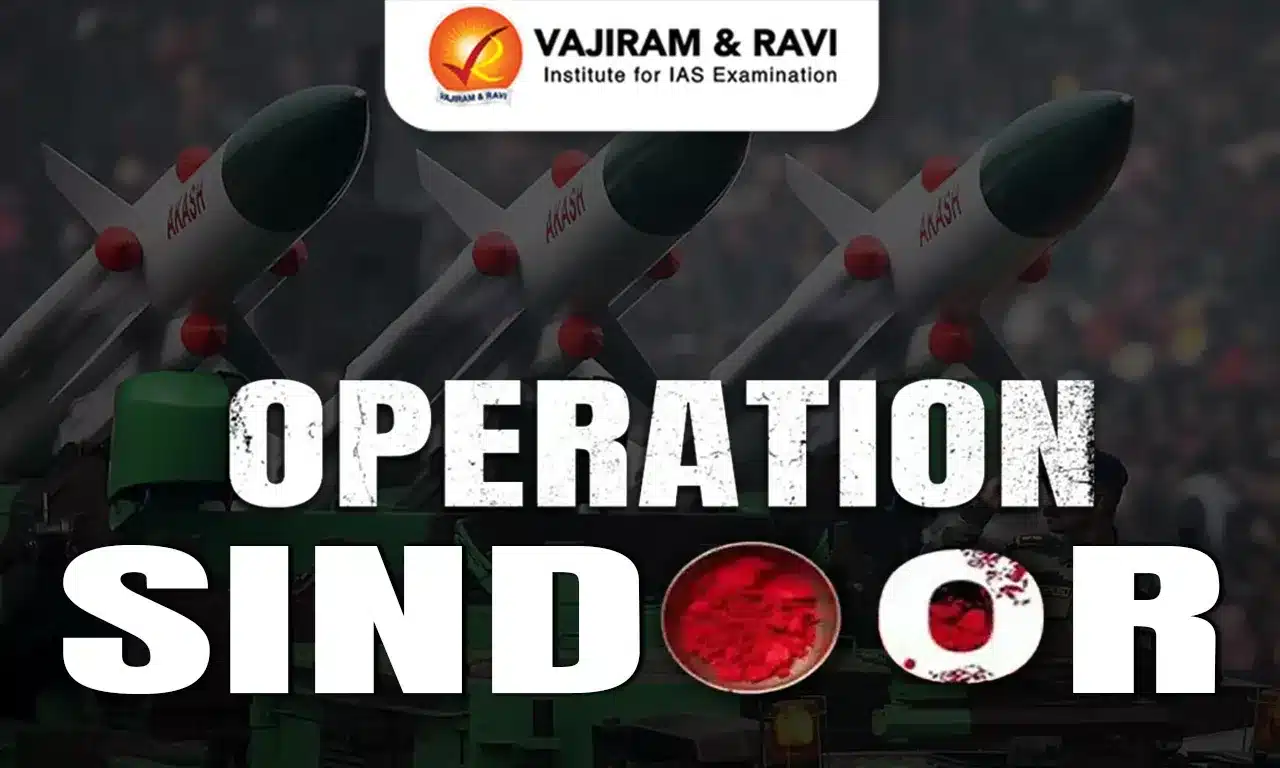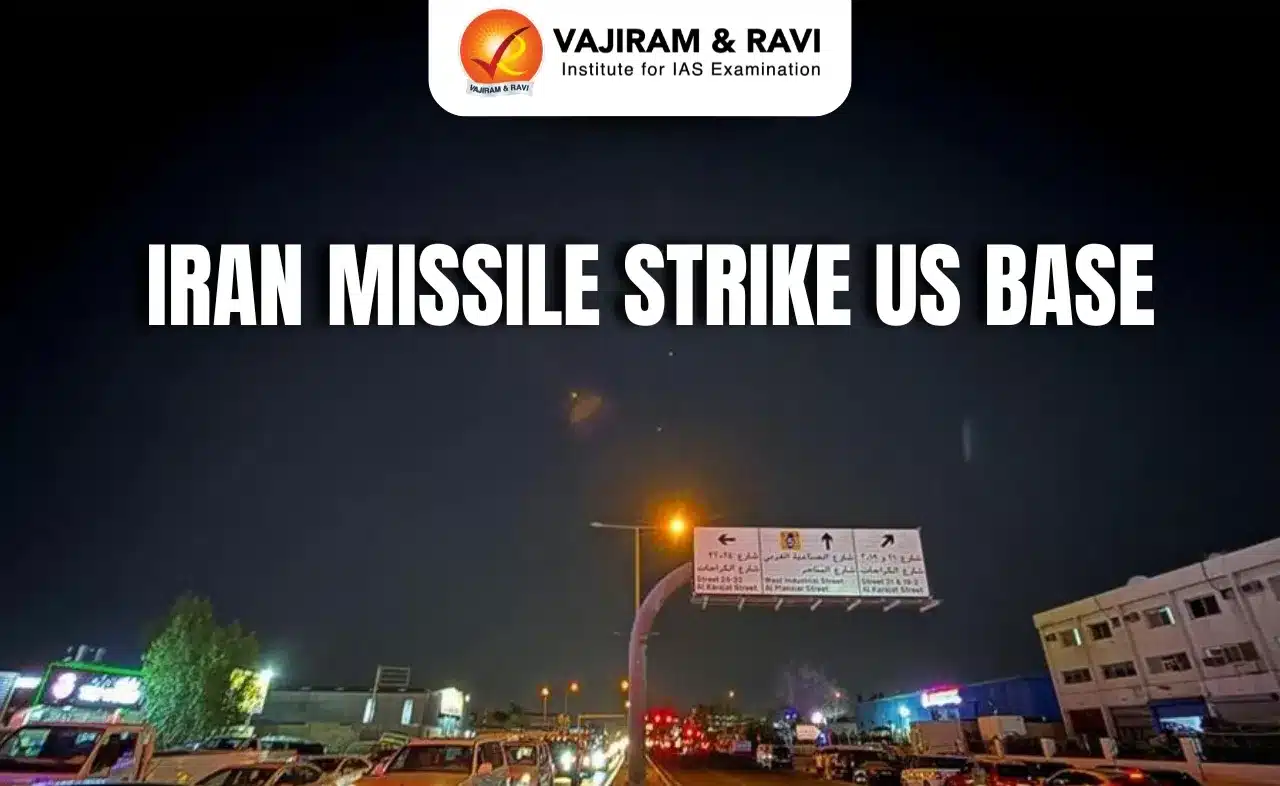What’s in Today’s Article?
- Operation Sindoor Latest News
- Precision Guidance and Navigation in Operation Sindoor
- Lethality and Destructive Power in Operation Sindoor
- Radars and Air Defence in Operation Sindoor
- Role of Unmanned Vehicles in Operation Sindoor
- Operation Sindoor FAQs
Operation Sindoor Latest News
- Operation Sindoor not only fulfilled India’s military goals but also showcased the technological superiority of its defence forces over Pakistan.
- The standout achievement was the effectiveness of India’s multi-layered air defence system, which intercepted nearly all incoming threats.
- Though official details remain undisclosed, experts credit the operation’s success to long-term investments in indigenous technologies—particularly in space, aeronautics, avionics, missile systems, and advanced weaponry.
Precision Guidance and Navigation in Operation Sindoor
- Operation Sindoor showcased India’s ability to strike with remarkable accuracy deep inside Pakistan and Pakistan-occupied Kashmir.
- Specific buildings within terrorist camps and air bases were destroyed with minimal collateral damage, highlighting India’s responsible and precise military action.
Advanced Guidance and Navigation Systems
- The success of these precision strikes was made possible by sophisticated guidance and navigation technologies, integrating both ground-based systems and space-based assets.
Role of Indigenous Technologies
- India’s home-grown navigation system, NavIC (Navigation with Indian Constellation), provided positional accuracy of 10–20 cm.
- It was supported by high-resolution satellites like Cartosat, RISAT, and EOS, capable of identifying objects as small as 25–30 cm.
Contribution of Defence Institutions
- Years of research and development by DRDO, ISRO, and other Indian scientific institutions culminated in this capability.
- The BrahMos missile, likely used in the operation, features state-of-the-art guidance systems developed indigenously.
Future Outlook
- Guidance and navigation has been identified as one of the 75 technology priority areas in DRDO’s 2023 Anusandhan Chintan Shivir, ensuring continued focus and advancement in this critical domain.
Lethality and Destructive Power in Operation Sindoor
- The total annihilation of terrorist camps and the deep craters visible at Pakistani air bases demonstrated not just precision, but the high lethality of Indian weapons.
- This level of destruction served as compelling evidence of India’s superior strike capability.
Excellence in Warhead and Propulsion Technologies
- The performance of Indian missiles reflected the success of advanced propulsion systems, warheads, and fuses.
- These are results of decades of investment under the Integrated Guided Missile Development Programme (IGMDP) led by Dr. A.P.J. Abdul Kalam.
Ongoing R&D in Lethal Capabilities
- India continues to enhance its strike power with research into deep penetration warheads, green explosives, and advanced fusing mechanisms.
- These developments aim to increase both destructive power and environmental safety.
Emerging Role of Directed Energy Weapons (DEWs)
- Indigenously developed DEWs, including laser-based systems, are believed to have played a role in neutralising incoming drones during the operation.
- DEWs, which damage targets using focused energy beams, have been identified as a priority sector by the Defence Ministry since 2022.
- DRDO also showcased DEWs during the 2025 Republic Day Parade.
Radars and Air Defence in Operation Sindoor
- India’s air defence systems played a pivotal role in neutralising almost every Pakistani aerial attack during Operation Sindoor.
- These systems operated in an integrated fashion, combining indigenous and imported technologies.
S-400 Triumph and Strategic Symbolism
- The Russian-origin S-400 air defence system received high praise, reflecting its significance in ensuring aerial security.
Indigenous Radar Backbone
- Several DRDO-developed radar systems—such as the Rajendra radar, Rohini 3D radar, low-level lightweight radars, and Low-Level Transportable Radars (LLTR)—formed the core of surveillance and detection, enabling tracking of enemy drones and aircraft.
Cutting-Edge Radar R&D
- Ongoing DRDO research includes work on:
- AI-powered radar tools
- Reconfigurable intelligent surfaces
- Advanced signal processing
- Foliage penetration and stealth detection radars
- These technologies aim to further sharpen India’s radar superiority.
Indigenous Missile Systems in Action
- The operation also saw deployment of:
- SAMAR systems, capable of intercepting low-flying aerial targets within a 12 km range.
- Akash surface-to-air missile systems, providing medium-range protection.
Upgraded Bofors Guns for Drone Defence
- Modernised Bofors anti-aircraft guns, enhanced with radar, electro-optical sensors, and auto-tracking, were effectively used to take down drones, particularly in Jammu & Kashmir.
- These upgraded units are also deployed along the LAC (Line of Actual Control).
Role of Unmanned Vehicles in Operation Sindoor
- Operation Sindoor marked the first significant deployment of unmanned systems—especially drones—by India in a conflict with Pakistan.
- Indian drones penetrated deep into enemy territory, targeting strategic sites in cities like Lahore, whereas Pakistani drone swarms were largely ineffective.
Shift in Warfare Paradigm
- Experts noted that future warfare will rely heavily on unmanned systems operating in sync with manned units.
- These hybrid formations will dominate the battlefield, with unmanned vehicles at the frontline and human-controlled systems in support roles.
India’s Growing Drone Capabilities
- In recent years, India has made significant advancements in drone technology for diverse applications.
- However, to fully leverage these technologies, collaboration across users, industry, and academia is essential.
Need for Domestic Production and Secure Supply Chains
- India must now scale up manufacturing capacity to produce unmanned systems rapidly and reduce reliance on imports.
- Ensuring secure and indigenous supply chains for critical raw materials is crucial to sustain and expand capabilities.
Operation Sindoor FAQs
Q1. What made Operation Sindoor successful?
Ans. Indigenous defence technologies like NavIC, BrahMos, and advanced drones enabled precise strikes with minimal collateral damage.
Q2. Which tech helped air defence?
Ans. Indigenous radars and imported systems like S-400 created a multi-layered shield against enemy aerial threats.
Q3. Did India use drones in the operation?
Ans. Yes, drones were used extensively to strike deep into enemy territory, marking a paradigm shift in warfare.
Q4. Were directed energy weapons involved?
Ans. Likely yes—laser-based DEWs helped neutralise enemy drones, showing futuristic battlefield tech in action.
Q5. What’s the long-term significance?
Ans. The operation validates India’s push for Atmanirbhar Bharat in defence, reducing import dependence and enhancing strike capability.
Source: IE
Last updated on June, 2025
→ UPSC Notification 2025 was released on 22nd January 2025.
→ UPSC Prelims Result 2025 is out now for the CSE held on 25 May 2025.
→ UPSC Prelims Question Paper 2025 and Unofficial Prelims Answer Key 2025 are available now.
→ UPSC Calendar 2026 is released on 15th May, 2025.
→ The UPSC Vacancy 2025 were released 1129, out of which 979 were for UPSC CSE and remaining 150 are for UPSC IFoS.
→ UPSC Mains 2025 will be conducted on 22nd August 2025.
→ UPSC Prelims 2026 will be conducted on 24th May, 2026 & UPSC Mains 2026 will be conducted on 21st August 2026.
→ The UPSC Selection Process is of 3 stages-Prelims, Mains and Interview.
→ UPSC Result 2024 is released with latest UPSC Marksheet 2024. Check Now!
→ UPSC Toppers List 2024 is released now. Shakti Dubey is UPSC AIR 1 2024 Topper.
→ Also check Best IAS Coaching in Delhi
























